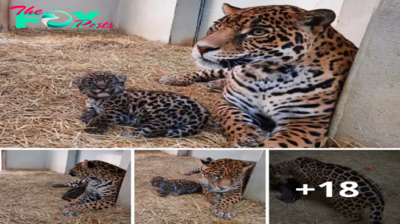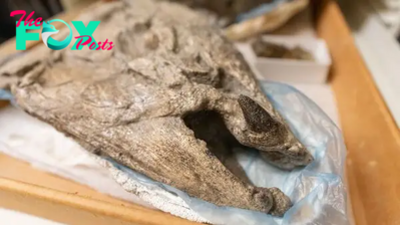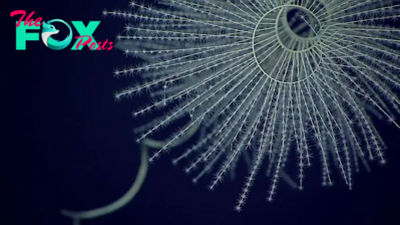Animals
Hidden DNA found in blue whales reveals they've been mating with other species — and their hybrid offspring
Blue whales in the Atlantic Ocean are harboring a previously unknown and potentially alarming level of hybrid DNA, a new study shows. The findings hint that whale hybrids are much more reproductively viable than previously realized.
Blue whales (Balaenoptera musculus) are the world's largest animal, capable of reaching an astonishing 110 feet (34 meters) long, around three times longer than a school bus.
The number of these giants plummeted in the early 20th century due to extreme levels of commercial whaling. As a result, blue whales are currently listed as endangered by the International Union for Conservation of Nature's (IUCN) Red List of Threatened Species, although their numbers are starting to rebound worldwide. Of the four subspecies of blue whale, B. musculus musculus, which is found in the North Atlantic and North Pacific, is one of the most at-risk.
In a new study, published Jan. 6 in the journal Conservation Genetics, researchers analyzed the genomes of B. m. musculus in the North Atlantic for signs of inbreeding, which could impede the recovery of this group.
The researchers created a "de novo" genome for this population, meaning it was created from scratch, by piecing together bits of DNA from different individuals. The team then used this new genetic blueprint as a template to further analyze the full or partial genomes of 31 individuals from across this population's range.
"This is a long, laborious process akin to assembling a huge jigsaw puzzle with no picture on the box for guidance," study co-author Mark Engstrom, an ecological geneticist at the University of Toronto, told Live Science in an email. But once the puzzle has been solved, it becomes much easier to do it again and again, he added.
They found that each of the sampled whales had somefin whale (Balaenoptera physalus) DNA lurking within their genomes. Around 3.5% of the group's DNA came from fin whales on average.
-

 Animals22m ago
Animals22m agoMS “Fisherman Discovers Enormous 75lb Pearl Valued at $100 Million, Secretly Preserving the Two-Foot Gem Under His Bed for a Decade as a Talisman of Good Luck” MS
-

 Animals22m ago
Animals22m agoMS “Locals Discover Massive Stranded Whale in Argentine Forest” MS
-

 Animals2h ago
Animals2h agoA 40-day arduous journey! Heavy pregnant dog аbаndoned in the snow, gave birth to 15 beautiful puppies
-

 Animals2h ago
Animals2h agoShe was Born With Five Legs And Two Tails, Was Discriminated Against All her Life For It And Lived On The Streets Unloved
-

 Animals3h ago
Animals3h agoUnlikely Friendship: Woman Rescues Bear from Closed-dowп Zoo, They Become Best Friends
-

 Animals3h ago
Animals3h agoVHe’s made a monkey oᴜt of him! South African vervet is сһаѕed up a tree by a leopard before making a life-saving leap from the highest branch .nb
-

 Animals4h ago
Animals4h agoLamz.New Hope in the Wild: Two Endangered Jaguar Cubs Born in ‘El Ocotal,’ Edomex, Sparking Conservation Efforts
-

 Animals6h ago
Animals6h agoMS “Egypt’s ‘Walking Whales’: Desert Fossils Reveal Ancient Sea Mammals Dominating Oceans 37 Million Years Ago” MS



























